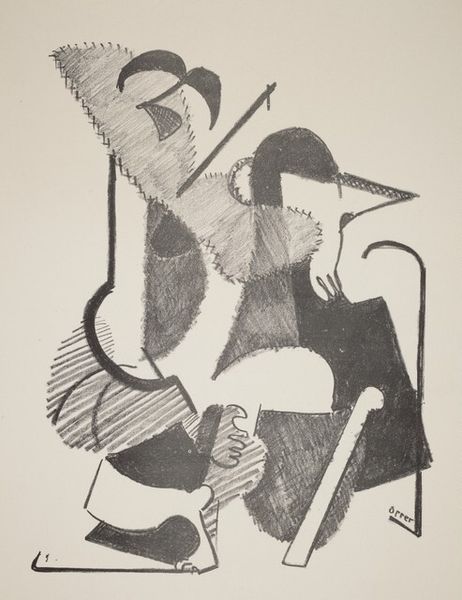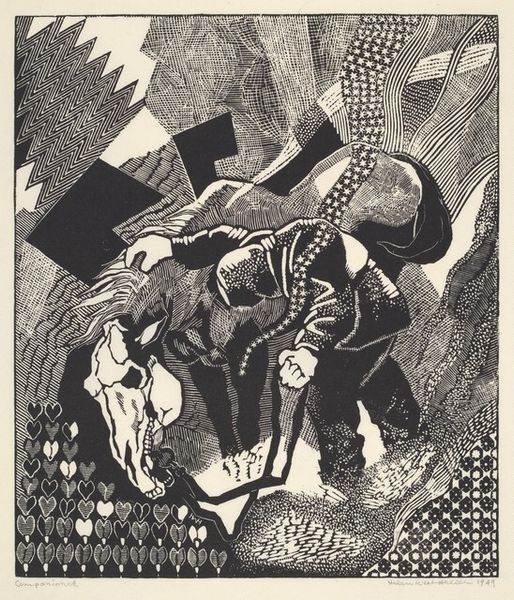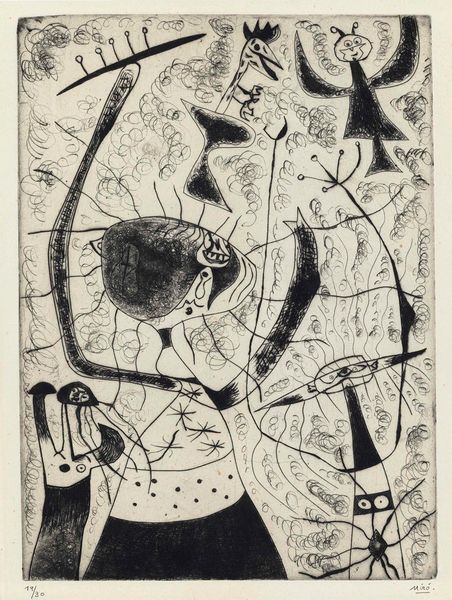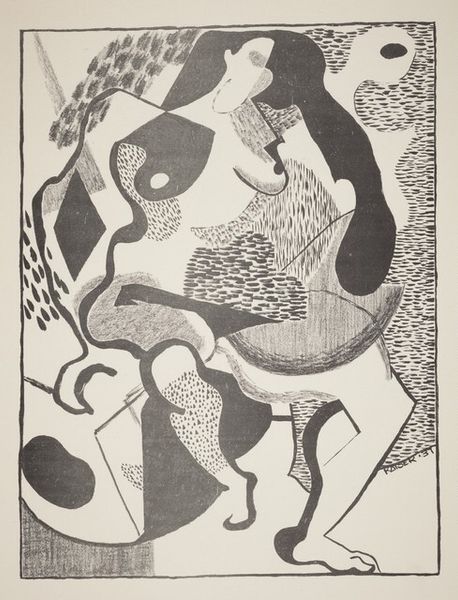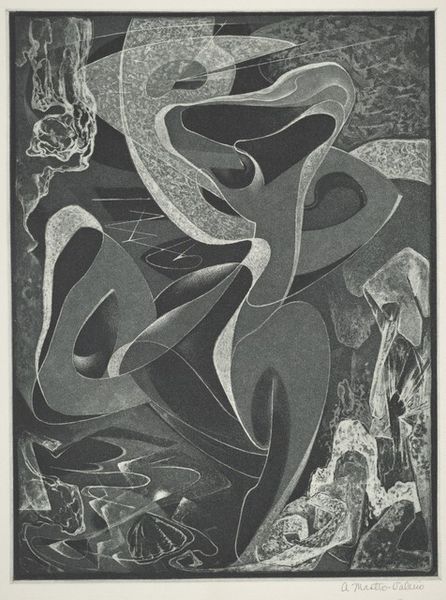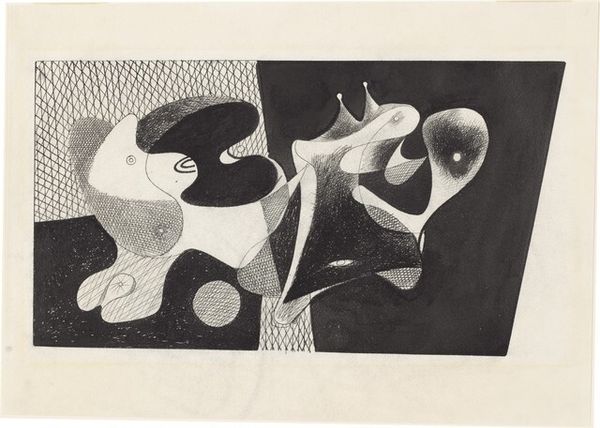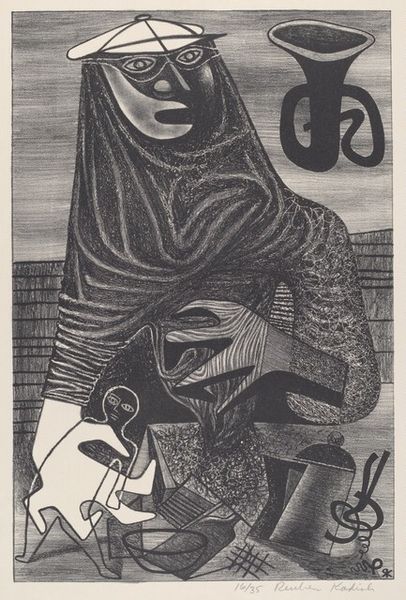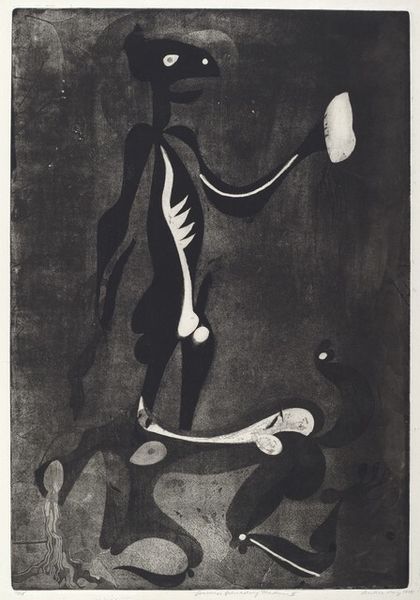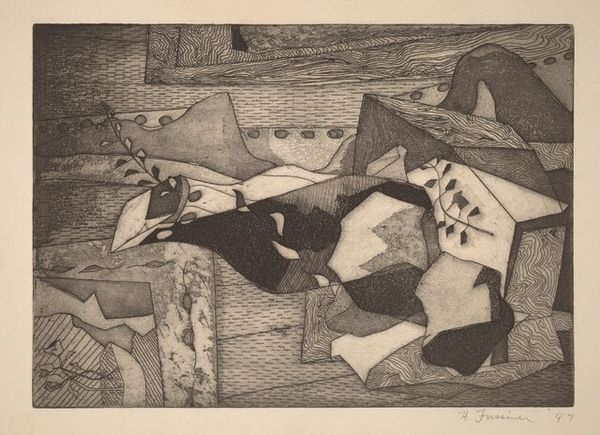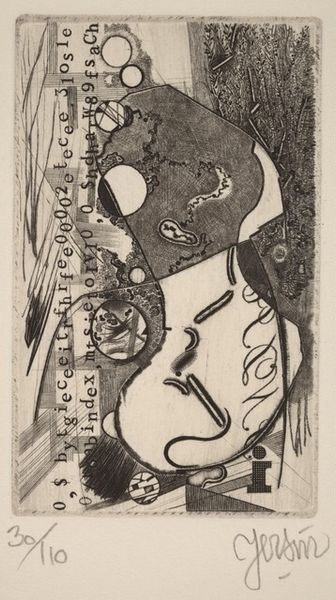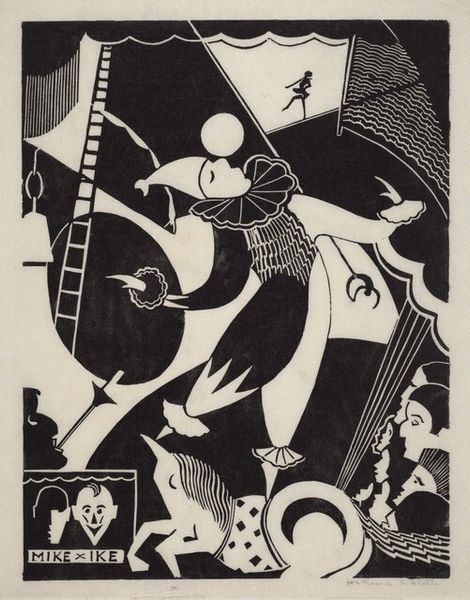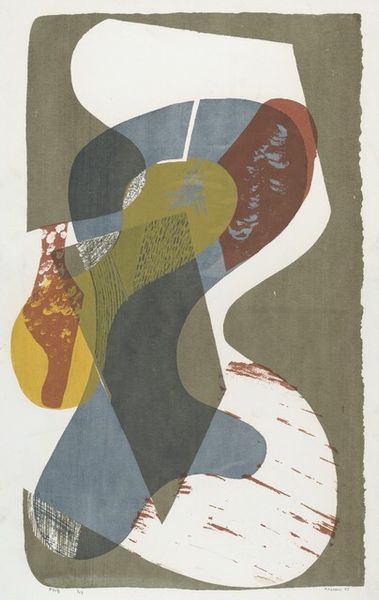
drawing, print, graphite
#
drawing
# print
#
figuration
#
geometric
#
abstraction
#
graphite
#
modernism
Dimensions: image: 412 x 310 mm sheet: 583 x 404 mm
Copyright: National Gallery of Art: CC0 1.0
Curator: Reuben Kadish's print, "Untitled (Industrial Accident)," from around 1937-1939, is rendered primarily in graphite. My immediate reaction is… discord. Sharp edges, looming forms… chaos. It almost feels cacophonous. Editor: Yes, “cacophonous” captures something important here. I want to situate this work within its historical moment, a period of massive industrial expansion but also of heightened anxieties about technology and labor exploitation, specifically related to the sociopolitical unrest of the 30's in the United States and abroad. Curator: It’s a beautiful mess, isn’t it? A cubist-inflected depiction of… well, what feels like a breakdown, maybe of bodies and machinery together. Look at those frantic, looping lines above, like something’s exploded. Editor: I see that. This composition challenges the glorification of industry typical of some modernist movements. Consider how it mirrors the concerns expressed by the Works Progress Administration's art projects during the Depression era—artists grappling with the human cost of progress. Curator: Absolutely. There's a real sense of dismemberment in the geometric forms. But is that entirely negative? There’s also this compelling interplay between figuration and abstraction. The shapes feel vaguely human yet fractured. Editor: Right, and I see a critique of dehumanization embedded in this fragmentation. It implicitly questions who benefits from industrial progress and at whose expense. The figures seem caught, trapped. Curator: Perhaps the beauty emerges precisely from acknowledging that dissonance, refusing to provide easy answers or picturesque scenes of industrial advancement. Instead, we see a raw, unsettling vision. Editor: Indeed. "Untitled (Industrial Accident)" speaks volumes about the fractures within the American promise itself. It serves as a vital historical witness to those silenced and harmed by unregulated industrial expansion. Curator: Looking at this again, I’m reminded that even from discord, meaning can powerfully emerge. The visual language here forces us to confront the ambiguities of progress. Editor: Absolutely, and in that confrontation, perhaps, a pathway toward more just and equitable futures. Thank you for walking me through your emotional and artistic insights, it adds texture to the cultural history we were trying to build!
Comments
No comments
Be the first to comment and join the conversation on the ultimate creative platform.
